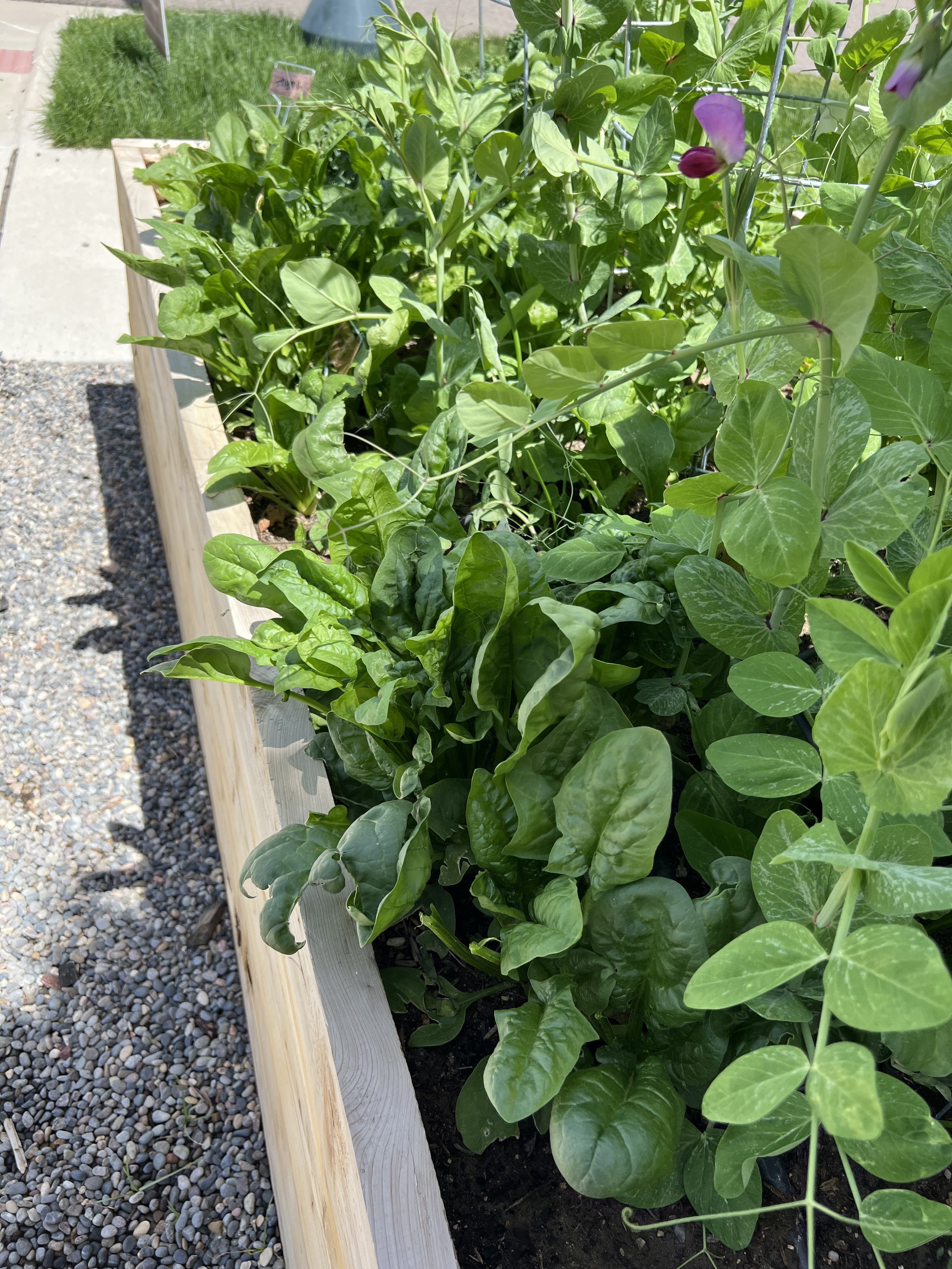How to grow…Spinach
**This post may contain affiliate links, which means I earn a small profit if you click on the link to make a purchase. Other links are not sponsored, because I also like supporting small, local businesses.**
The effortless garden delight! Ditch the store-bought boxes that get slimy before you get to the car and grow your own spinach almost year round.
Find a place in the garden that gets around 6 hours of sun (though spinach can grow with as little as 4 hours) and afternoon shade. If you’re growing in pots, opt for a container about 6” deep. Spinach loves the cool days of spring and fall and can handle frost unprotected, it even sweetens the leaves. If you have a season extension set up you can even grow well into the winter though the growth rate slows with less daylight hours.
Traditional spinach doesn’t like it above 75°, but New Zealand, malabar spinach, and some varieties of amaranth can all handle the heat.
Spinach can be direct sown in the garden in March or as soon as your soil is workable. Loosen the soil a couple inches down and add in a little compost. Spinach seeds are pretty big, so I like to plant them one at a time - though I have been known to use the lazy - throw a million seeds into the soil - method too. Use a garden ruler and a dibber, a pen, or your finger to make holes 1/2" deep every 2-4” on all sides (9 plants per square foot). Then cover and pat down the planting holes. Water the seeds and keep the soil moist while you wait for the seeds to germinate.
Direct sowing in the garden is best since spinach doesn’t love to have its roots disturbed. It leads to plants that suffer transplant shock and are more prone to early bolting. If you want to start them indoors, opt for soil blocking or using small, individual containers so you don’t have to separate seedlings.
Spinach is prone to leaf miners in the spring. Cover with a light frost cloth to exclude these pests from your plants.
Water well and regularly especially when seeds are germinating and the plants are young. Once established, water when the soil feels dry 1” deep (about 2 knuckles deep). Once water is turned on in the spring, use a drip irrigation system to water your plants regularly. While you can fertilize plants with a high nitrogen fertilizer like seaweed or fish emulsion, the compost you add at planting time is usually enough for the plants to flourish.
Harvest the outer leaves as soon as they get to an eatable size for baby spinach (usually around 30 days) or wait until they get bigger (usually around 60 days). Use clean scissors or your fingers to take just a few leaves at a time. The plant will continue to grow and flourish in the garden until it gets too hot. Once plants have bolted (the center starts to grow tall and the leaves begin to change shape) cut them at the base and finish your spinach bounty.
Some spinach we love:
Bloomsdale - for a great all around variety. Tends to be more frost tolerant because of the texture.
Oceanside - more slowly to bolt though it still won’t last long into summer.
Tatsoi - my favorite cool season spinach alternative.
PS. Are you a spinach fiend? Make sure you’re signed up for our mailing list to get notified when we post about warm weather spinach varieties.



